Looking to buy a power meter for your road bike to bring your cycling to the next level?
You’re on the right page.
Before you commit to buy one, there are things you need to know such as the various types, how and where the power measurement is taken, and more importantly, which one is compatible with your current bike set up.
How We Pick Power Meters
There are many models out there today. Dual sided, single sided crank arm, spider, pedal based, or wheel hub. There is no shortage of options compared to 10 years ago.
This makes picking the best one a tough task. We focused on the established names such as SRM, Power2Max, Quarq, and Stages. From there, we applied the criteria that we set out below to come up with this list.
- Type of Power Meter. We picked the best models for single sided, dual sided, spider, pedal and wheel hub based.
- Exiting Bike Setup. You don’t need to swap the entire crankset these days. There are many options out there that complement your existing setup. All you need is to swap out either the left crank arm, spider, or just the pedals, depending on your existing set up.
- Accuracy. If you’re looking to improve your cycling performance, it’s crucial to use one that has an accuracy of within +/- 1 to 2% and be consistent every single ride, in all weather conditions.
- Price points. You can find picks ranging from $500 for the likes of StagesCycling and 4iiii, or all the way up to $2,000 for SRM.
If you’d like to know more about power meters, read our beginner’s guide to power meters here.
A Quick Glance : Our Favorite Power Meters for Road Bikes
| Model | Type | Accuracy | Best For |
|---|---|---|---|
| SRM Origin | Spider | 1.5% | Accuracy |
| Power2Max NG Eco | Spider | 2% | Wide Compatibility |
| Stages | Left Sided | 2% | Budget Minded |
| 4iii | Left Sided | 1.5% | Shimano Cranksets |
| Quarq D Zero | Spider | 1.5% | SRAM |
| Power2Max NG | Spider | 1% | Campagnolo |
| Powertap G3 | Wheel Hub | 1.5% | Those with Many Bikes |
| Garmin Vector 3 | Pedal | 1% | Easily Swappable |
Well-Known for Accuracy
SRM Origin
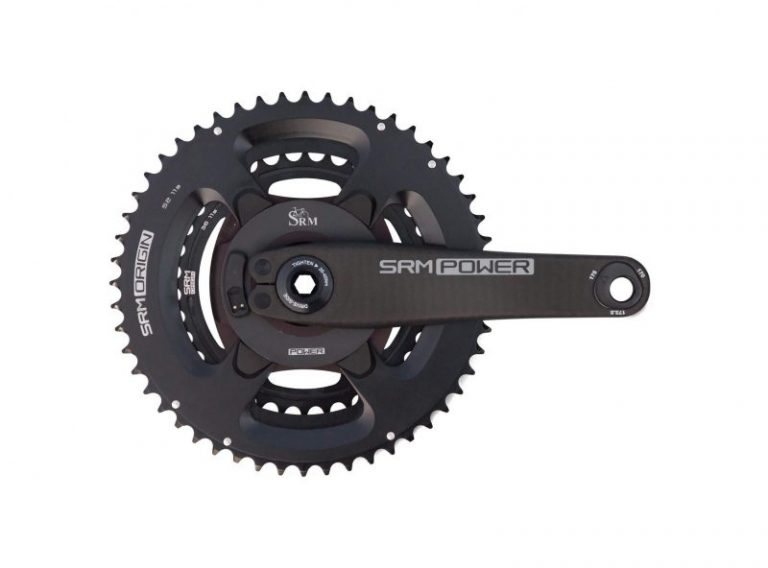
If you’re super serious about improving your performance, then you want a super accurate power meter. Look no further than the SRM. The biggest selling point of SRM is their gold standard accuracy.
SRM is one of the pioneers of power meters, developing its first model all the way back in 1986. Their latest SRM Origin, uses a 144-point calibration method and its Auto-Offset feature to make this power meter as consistent and accurate as possible, to within 1.5%.
You also won’t compromise on weight. With its LOOK carbon crank arm, it weighs in at just 599g. The crank arm is also adjustable from 170 mm to 175 mm through its Trilobe Technology.
The SRM Origin also includes interchangeable spindles that make it compatible with virtually any bike frames.
- Pros : The gold standard. Very accurate and reliable power readings.
- Cons : Expect to pay a much higher premium over the others.
Widest Compatibility Pick
Power2Max NG Eco
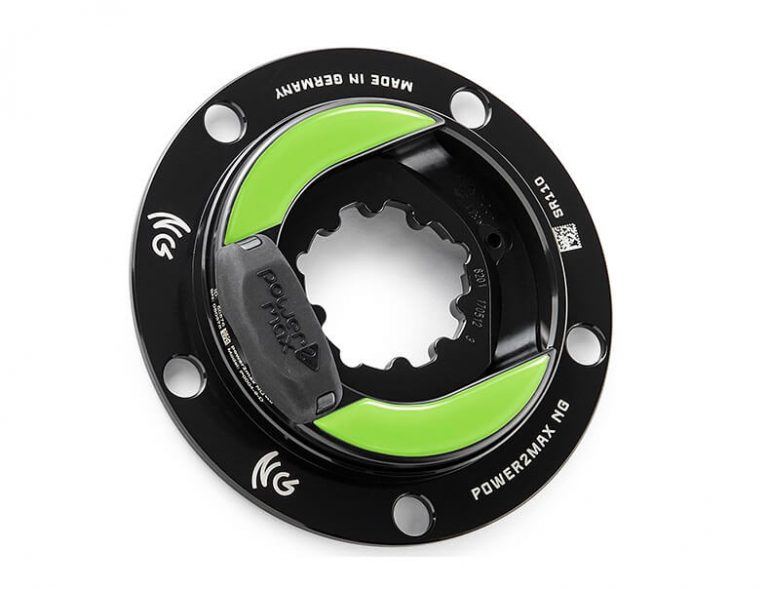
Power2Max manufactures power meters for all the major crankset brands such as SRAM, Praxis, ROTOR, Shimano, FSA, Cannondale, Easton, and Campagnolo.
The NG Eco is one of Power2Max’s most versatile and budget-friendly options out there today. It combines left and right power measurements, comes with ANT+ and Bluetooth connectivity and is accurate within 2% at a price point below other spider based power meters such as the SRM Origin.
It is powered by a coin cell CR2450 battery that gets between 300 and 400 hours of battery life and comes with a 2-year warranty.
- Pros : Wide compatibility across many leading crankarm brands.
- Cons : Non-rechargeable battery.
For Shimano Cranksets
Stages Cycling Gen3

If you’re looking for the best left sided power meters for Shimano groupsets, then you know it’s going to be for Shimano DuraAce.
The DuraAce is Shimano’s top-of-line group of components for road bikes which you’ll often find on the bikes of pro cyclists such as Team Ineos, who has won multiple Tour de France in the past 10 years with 4 different riders.
This Stages Cycling power meter is accurate within 1.5% and only adds 20g to your bike. It has both ANT+ and Bluetooth connectivity, allowing you to connect to your head unit and your smartphone or even tablet if you’re riding indoors on Zwift.
It’s available for crank arm lengths from 165mm to up to 180mm.
- Pros : Lightweight and adds only 20g to existing set up.
- Cons : Non-rechargeable battery.
Budget and Affordable Pick
4iiii Precision (Shimano Ultegra)
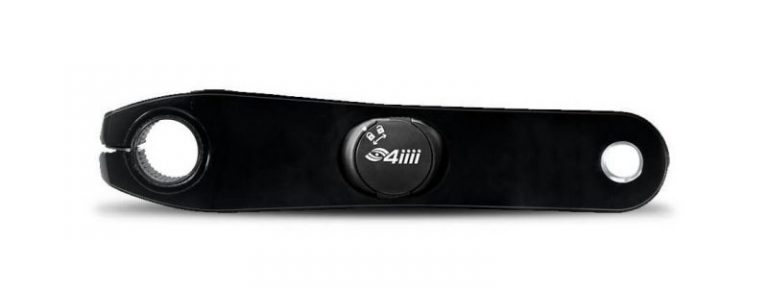
At $500, the 4iiii is a steal for cyclists who are already running Shimano Ultegra crank arms.
Manufactured by Canada-based 4iiii (Shimano recently bought 4iiii), the 4iiii Precision measures left leg power with 1% accuracy. It’s lightweight, adding just 9g to the left crankarm’s weight, and can be installed in minutes.
It uses ANT+ and Bluetooth Smart to communicate, making it compatible with most bike computers and smartphones. Powered by a lithium-ion rechargeable battery, it packs around 60 hours of battery life.
For wider compatibility, you’ll have a choice of crankarm lengths from 165mm up to 175mm and is compatible with all existing Shimano Ultegra R8000 cranksets.
- Pros : Best value for those using existing Shimano cranksets.
- Cons : Shorter battery life.
For SRAM Setup
Quarq DZero
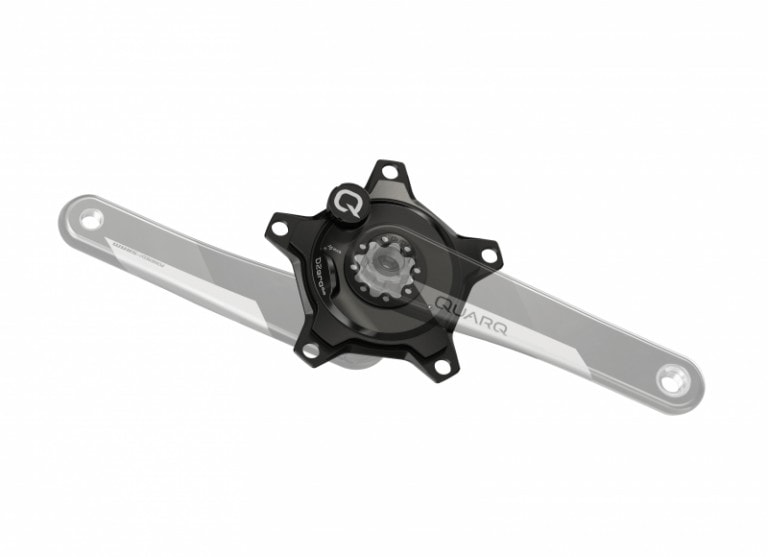
The Quarq DZero combines the best that Quarq and SRAM have to offer.
Quarq started in 2008 in Australia before being sold to SRAM in 2011. It combines Quarq’s DZero power meter technology with SRAM DUB (Durable Unified Bottom Bracket) technology. The result is a power meter that is perfectly suited for those who’re already riding on SRAM components, especially the crankset.
It’s compatible with all SRAM crank arms with 5-bolt chainrings (10 and 11 speed). It also comes with a 2-year warranty. The Quarq DZero is powered by a coin cell battery (CR2032) that provides about 200 hours of battery life.
- Pros : Accurate down to +/- 1.5%
- Cons : Limited compatibility to SRAM and Specialized crank arms only.
For Campagnolo Cranksets
Power2Max NG
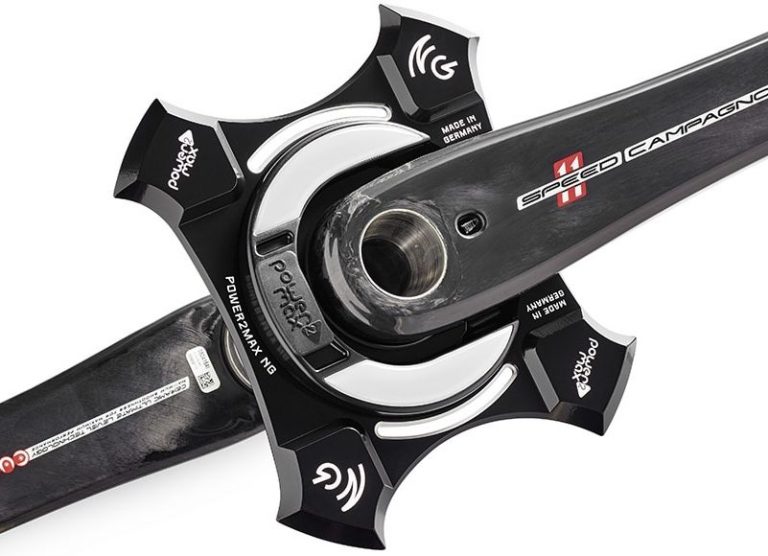
If you ride Campy components and you’re willing to spend a little more, then consider the Power2Max NG.
It’s probably the prettiest looking option for any cyclist running on Campagnolo components. It comes with both left and right carbon crankarms, but minus the 4-bolt Campagnolo chainring, which you will have to purchase separately.
Campagnolo components tend to be the most expensive, and this is no exception. While it may be priced on the premium side of things, it’s important to note that this model does give you a spider and left and right carbon cranks.
Accuracy is excellent at 1%, and it is powered through USB recharging. It also comes with one of the best warranties available. Power2Max has you covered for 5 years.
- Pros : One of the best-looking models for Campagnolo cranksets.
- Cons : Expect it to cost more than most brands except for SRM.
Hub Based Pick
Powertap G3
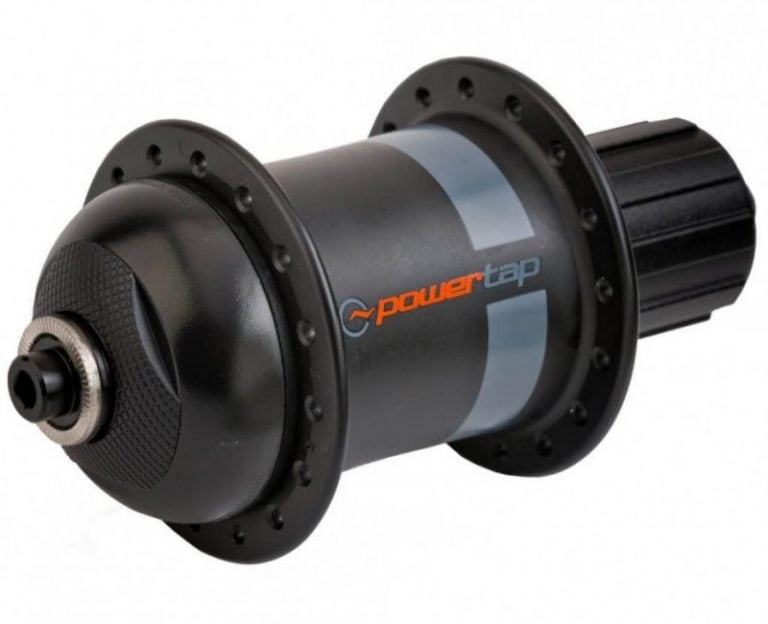
Have multiple bikes and don’t want to invest in multiple power meters? Check out the Powertap G3.
Choosing a wheel hub based power meter is a relatively simple task. Why?
Because there’s only one company that has figured out how to make them, and that company would be Powertap, which has been producing hub based meters for the past 20 years.
It features accuracy to within 1.5% and is powered by a CR2032 battery with 200 riding time hours. The Powertap G3 comes with a 2-year warranty.
Perhaps the biggest lure of the Powertap is its price. At $400, this gives you a power meter at a fraction of the price of other options on the market.
- Pros : Accurate down to +/- 1.5%
- Cons : Needs to be used with a custom-built wheelset.
Pedal Based Pick
Garmin Vector 3
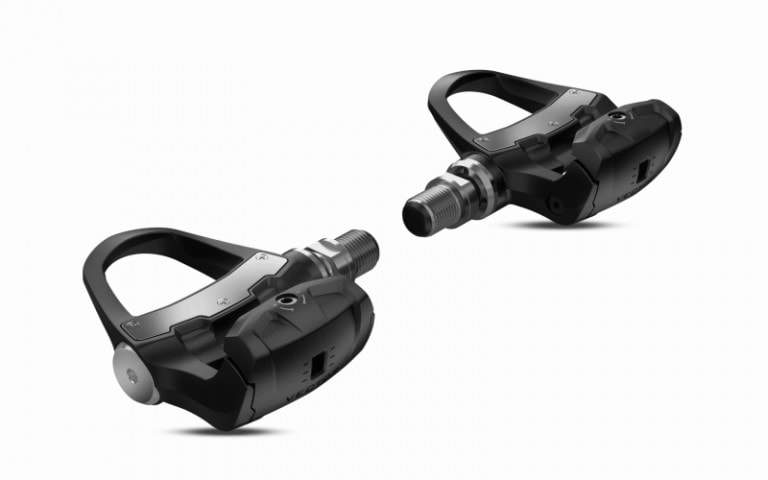
Pedal based power meters offer the advantage for you to easily swap between bikes.
If this is what you’re after, then you can’t go wrong with the Garmin Vector 3. It is available as a dual sided pedal power meter, with strain gauges in both pedals, or single sided in the left pedal only (Garmin Vector 3S).
It supports both ANT+ and Bluetooth connections and is accurate to within 1%. If you’re a power data geek, this gives you access to all of Garmin’s cycling data points such as power phase, peak power phases, and more for a detailed deep dive into your performance and power output.
- Pros : Easily swappable between multiple bikes.
- Cons : Pedal body prone to damage during crashes.
Author Recommended Reads

